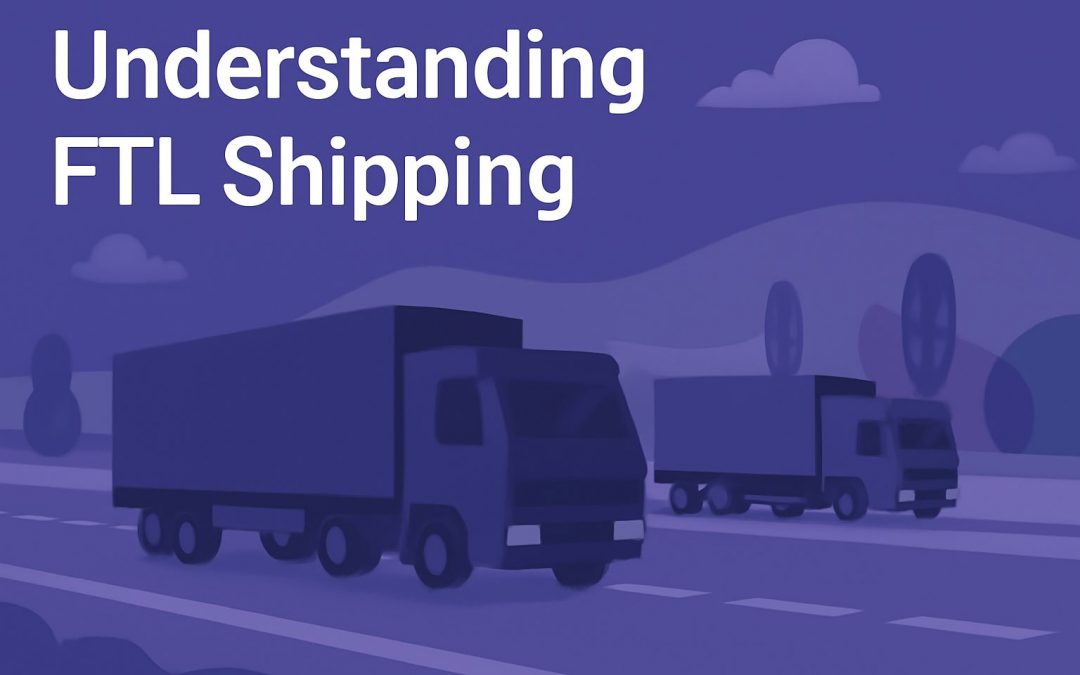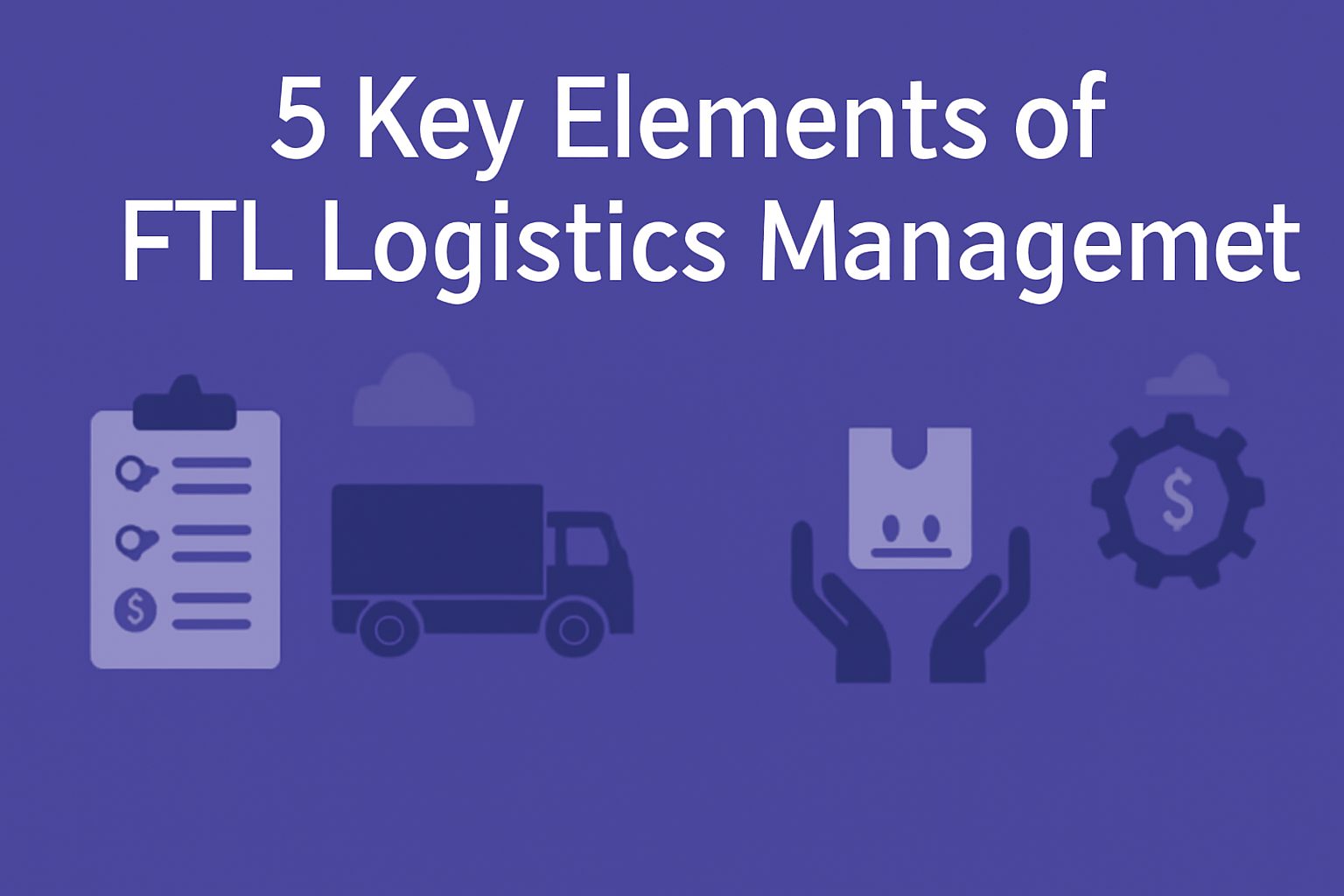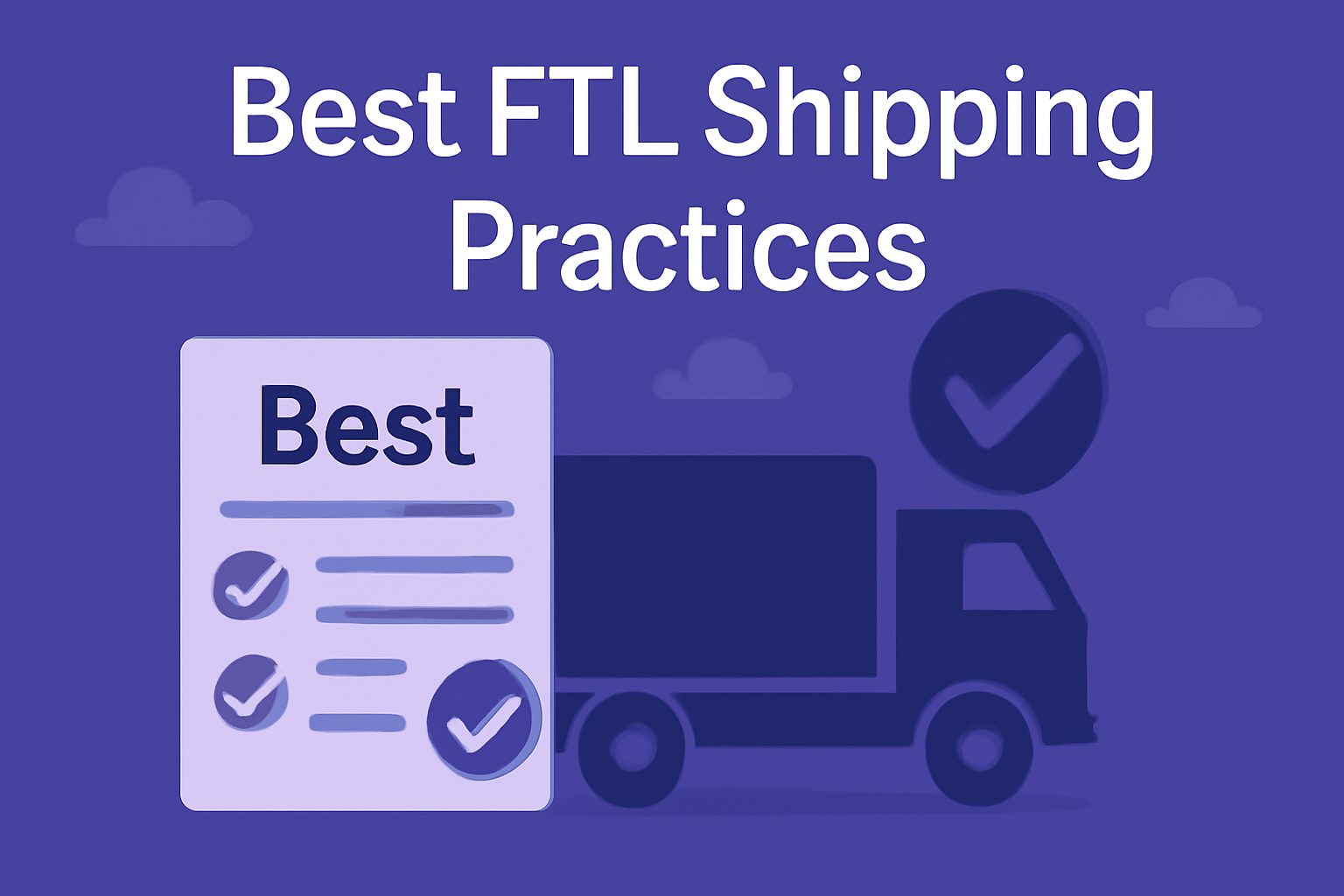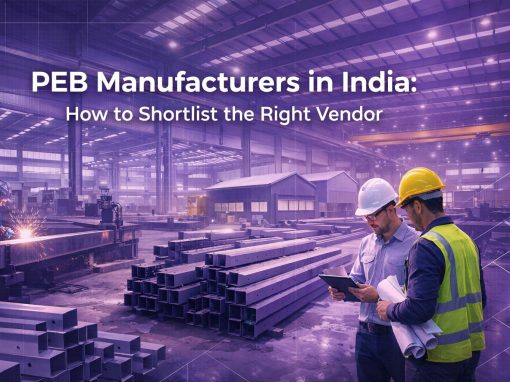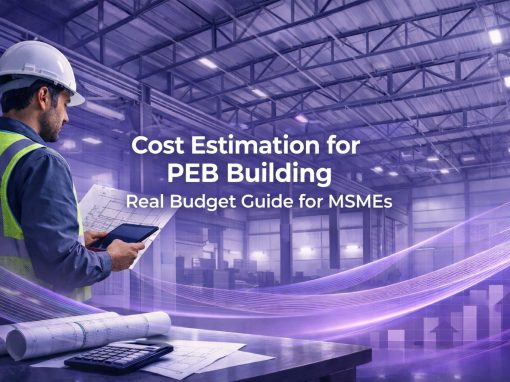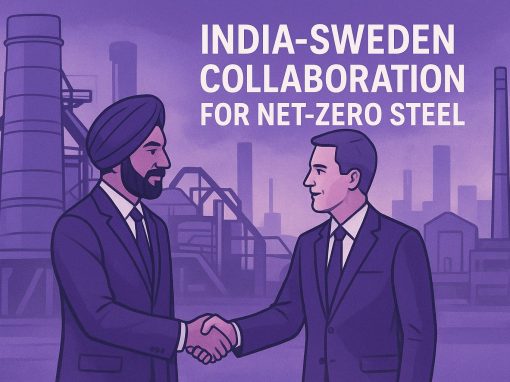Table of Contents
Full Truckload (FTL) logistics is a critical component of transportation management, particularly for businesses that deal with large volumes of goods. For Micro, Small, and Medium Enterprises (MSMEs) in India, FTL provides a streamlined approach to shipping, offering greater efficiency.
However, MSMEs often face significant challenges in logistics, including high transportation costs, inefficient supply chains, and limited access to advanced infrastructure. These hurdles can impact their ability to scale in a fast-evolving market. Understanding FTL logistics at its core is therefore important. Let us dive right in!
Understanding FTL Shipping
Full Truckload (FTL) logistics refers to the transportation method where an entire truck is dedicated to a single shipment. This means that the truck is filled to its maximum capacity with goods from one sender, allowing for faster, more direct delivery. FTL is ideal for businesses with large volumes of goods that need to be transported over long distances.
FTL differs from other shipping methods like Less Than Truckload (LTL) and Partial Truckload (PTL). While FTL shipments occupy the full capacity of a truck, LTL shipments combine goods from multiple shippers into one truck, resulting in shared costs and longer transit times due to multiple stops. PTL, on the other hand, allows for smaller shipments than FTL but more than LTL, offering some shared cost benefits while still being faster than LTL.
FTL shipping is particularly advantageous for MSMEs when dealing with large shipments or time-sensitive deliveries. Additionally, for shipments with high priority, where speed is crucial, FTL ensures quicker delivery times, as the truck travels directly to the destination without detours for other deliveries. This makes FTL a strategic choice for MSMEs looking to optimise their logistics and improve operational efficiency.
The Role of FTL Logistics Management for MSMEs
Logistics management is a crucial aspect of operations for MSMEs, as it directly impacts efficiency, cost management, and customer satisfaction. Effective logistics ensures the timely delivery of goods, manages inventory, and streamlines supply chains, helping businesses maintain a competitive edge in the marketplace.
That said, MSMEs in India often face significant operational challenges in transportation and supply chain management. Limited access to advanced infrastructure, rising fuel costs, and complex regulatory requirements make logistics a costly and cumbersome aspect of business operations. Additionally, MSMEs frequently deal with issues such as delayed shipments, inventory mismanagement, and a lack of real-time tracking systems. These challenges can result in stockouts, increased lead times, and higher transportation expenses, affecting the bottom line and customer satisfaction.
For MSMEs to scale and grow, efficient logistics management is essential. Streamlined logistics not only lowers costs but also enhances the ability to meet customer demands on time. By optimising transportation, inventory management, and using modern tools such as route planning software and real-time tracking, MSMEs can reduce operational bottlenecks and improve delivery efficiency. Ultimately, logistics becomes a key enabler of growth, allowing MSMEs to compete effectively in the market and expand their reach.
5 Key Elements for FTL Logistics Management
Effective FTL logistics management is vital for MSMEs looking to streamline their transportation and supply chain operations. It involves a systematic process that begins with planning the shipment and continues through to delivery. Here’s a breakdown of the key steps involved:
Planning the FTL Shipment
The first step in FTL logistics management is understanding and planning the shipment. MSMEs need to assess their FTL shipping needs, including the type of goods, volume, weight, and dimensions. This helps determine whether FTL is the most efficient option or if alternatives like LTL (Less Than Truckload) might be more cost-effective. Once the shipment size is confirmed, the next step is to choose the appropriate vehicle type. Factors such as the size of the shipment, type of cargo (e.g., fragile, temperature-sensitive), and destination play a role in selecting the right truck, ranging from standard dry vans to specialised refrigerated or flatbed trucks.
Carrier Selection
Evaluate potential FTL carriers based on factors such as cost, reliability, and service history. Cost is a primary concern, but it should not be the only factor. Reliability and timely delivery are equally important. MSMEs should also review the carrier’s service history, ensuring they have a proven track record in handling similar shipments and adhering to delivery timelines. Carrier reputation can be gauged by checking customer feedback, online reviews, or through industry referrals. It is also essential to establish clear communication channels with the carrier to ensure ongoing coordination and address any issues that may arise during transit.
Route Planning and Optimisation
Proper route planning for FTL logistics planning helps reduce transportation costs, improve transit times, and minimise fuel consumption. Businesses can use route optimisation tools to assess factors such as traffic patterns, road conditions, tolls, and distance so as to identify the quickest and most cost-effective routes. Additionally, using real-time data for route adjustments (due to traffic or weather conditions) can further enhance efficiency and avoid delays.
Loading and Unloading Processes
Efficient loading and unloading are critical for minimising delays and preventing damage to goods during transit. For FTL shipments, best practices include properly securing cargo to avoid shifting during transport, which can lead to damage. Using loading docks, forklifts, and pallets can ensure the smooth movement of goods in and out of the truck. MSMEs should ensure that workers are trained in proper handling techniques and that there is a streamlined process in place for both loading and unloading, to reduce turnaround times. Additionally, implementing inventory checks at loading and unloading points ensures that all goods are accounted for, further reducing the risk of errors or damage.
Tracking and Monitoring
Modern tracking technologies have revolutionised the FTL logistics process, providing MSMEs with real-time visibility of their shipments. Tracking systems equipped with GPS and RFID technology allow businesses to monitor their goods from the moment they leave the warehouse until they arrive at their destination. This visibility helps businesses stay informed about the location of their shipments, expected delivery times, and any delays that may occur. Tracking technology also enables proactive issue resolution. For instance, if a shipment is delayed or rerouted, businesses can quickly adjust their operations or inform customers about the new delivery schedule. Moreover, using digital platforms for monitoring allows for better inventory management and helps identify patterns that can be used to optimise future shipments.
FTL Shipping Costs and Budgeting for MSMEs
Managing Full Truckload (FTL) shipping costs is crucial to maintaining a healthy bottom line. Understanding the various components that contribute to FTL logistics expenses can help businesses budget effectively. Additionally, negotiating better rates with carriers through strategies like volume commitments and flexible scheduling can lead to significant cost savings. Listed below are 5 cost components to consider with FTL shipping.
| Cost Component | Description | Impact on MSMEs |
| Fuel | The price of fuel is a major factor in FTL shipping. Fluctuating fuel prices can significantly affect total shipping costs. | MSMEs should monitor fuel prices and factor this into their budgeting. |
| Distance | Longer distances typically result in higher shipping costs, as they increase fuel usage and time spent in transit. | Plan routes strategically to minimise distance and reduce costs. |
| Tolls and Road Taxes | Certain highways or routes may have tolls or additional road taxes that add to the overall cost of shipping. | Factor these additional costs into the total shipping budget. |
| Handling Fees | Fees for loading, unloading, or any special handling of goods during transport. | Negotiate handling terms with providers to minimise these fees. |
| Carrier Insurance | The cost of insuring the goods being transported, particularly for valuable or fragile items. | MSMEs should evaluate the necessity of insurance based on product value. |
Best Practices for MSMEs to Manage FTL Logistics Effectively
Implementing a few key practices can help MSMEs streamline their shipping processes and ensure better cost control. Here are some of them:
Optimising Shipment Schedules
Properly planning shipments in advance is crucial for taking full advantage of FTL pricing. When shipments are scheduled early, MSMEs can align their needs with the availability of FTL services, avoiding last-minute rush charges. By aligning multiple orders into one shipment, businesses can ensure they meet minimum load requirements, reducing overall transportation costs.
Regular Carrier Performance Reviews
Establishing a routine to assess carrier performance is essential for ensuring ongoing cost-effectiveness. Regularly evaluating key metrics such as on-time delivery, fuel efficiency, and service quality helps identify areas for improvement. This information allows MSMEs to negotiate better terms with reliable carriers and switch providers when necessary to maintain the best value.
Leveraging Technology
Utilising logistics management software and real-time tracking systems can significantly enhance FTL logistics management. These tools enable better visibility of shipments, allowing MSMEs to track goods in real-time and make informed decisions. Route optimisation tools further reduce costs by helping identify the most efficient and cost-effective routes.
Building Relationships with FTL Providers
Long-term relationships with trusted FTL providers foster reliability and flexibility. When MSMEs work closely with a provider over time, they can benefit from personalised services, preferential pricing, and more flexible scheduling options. Strong relationships can also provide valuable insights into carrier performance and industry trends, benefiting the business in the long run.
Challenges in FTL Logistics for MSMEs
| Challenge | Solution |
| High Costs for Small Shipments | Description: FTL services can be cost-effective for large shipments, but smaller loads may not justify the cost of an entire truck.
Solution: MSMEs can consolidate shipments with others or use Partial Truckload (PTL) services to reduce costs. |
| Infrastructure Limitations | Description: Many MSMEs lack sufficient warehouse space or specialised handling facilities to manage FTL shipments.
Solution: Collaborating with third-party logistics (3PL) providers or using shared logistics facilities can address space limitations. |
| Regulatory and Compliance Issues | Description: Transportation regulations, taxes, and permits can vary by region, causing delays or penalties for MSMEs.
Solution: Partnering with logistics providers familiar with local regulations can ensure compliance and avoid penalties. |
| Route Optimisation Issues | Description: Identifying the most efficient delivery route can be challenging, leading to delays and higher fuel costs.
Solution: Using GPS tracking and route optimisation tools helps identify cost-effective and timely delivery routes. |
| Lack of Flexibility in Scheduling | Description: Fixed delivery schedules from FTL carriers may not align with the company’s operational needs, causing inefficiencies.
Solution: Negotiate flexible pickup and delivery schedules with FTL providers to better align with business operations. |
Conclusion
Proper FTL shipping and logistics management can benefit MSMEs with significant cost savings, improved delivery times, and better control over shipments. Adopting these best practices will help MSMEs manage their logistics more effectively and enhance overall efficiency.
Need reliable logistics solutions for your business?
Tata nexarc helps businesses streamline their supply chain with trusted transporters, competitive pricing, and real-time tracking—ensuring timely and cost-effective delivery across India.
FAQs
What is Full Truckload (FTL) shipping?
How is FTL logistics different from LTL and PTL?
What are the benefits of FTL shipping for MSMEs?
How do I know if FTL is the right option for my shipment?
What are the main costs involved in FTL logistics?
How can MSMEs reduce FTL logistics costs?
What are the common challenges faced by MSMEs in FTL logistics?
How can MSMEs manage the high costs of FTL shipping for smaller shipments?
How does technology help in managing FTL logistics?
Why is it important to build long-term relationships with FTL providers?
A product manager with a writer's heart, Anirban leverages his 6 years of experience to empower MSMEs in the business and technology sectors. His time at Tata nexarc honed his skills in crafting informative content tailored to MSME needs. Whether wielding words for business or developing innovative products for both Tata Nexarc and MSMEs, his passion for clear communication and a deep understanding of their challenges shine through.
